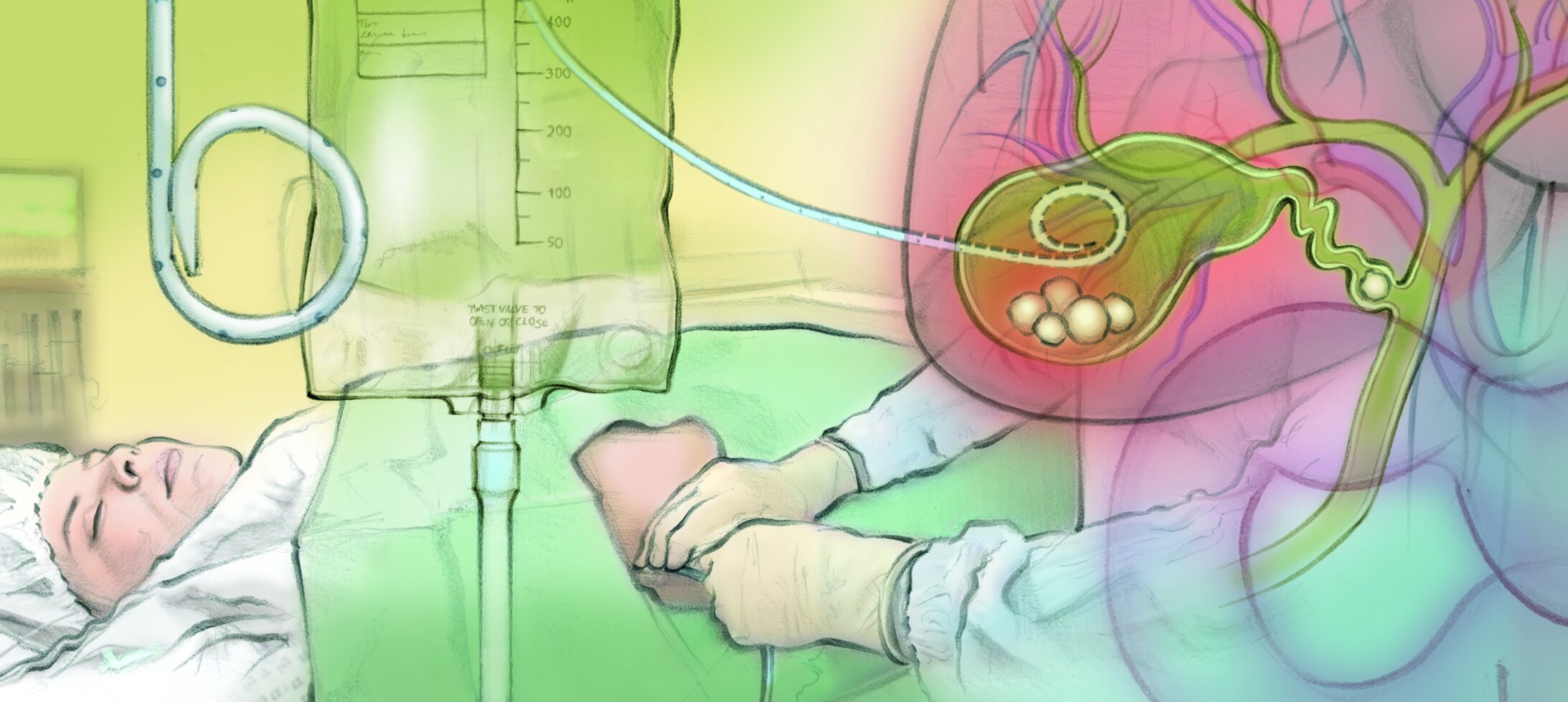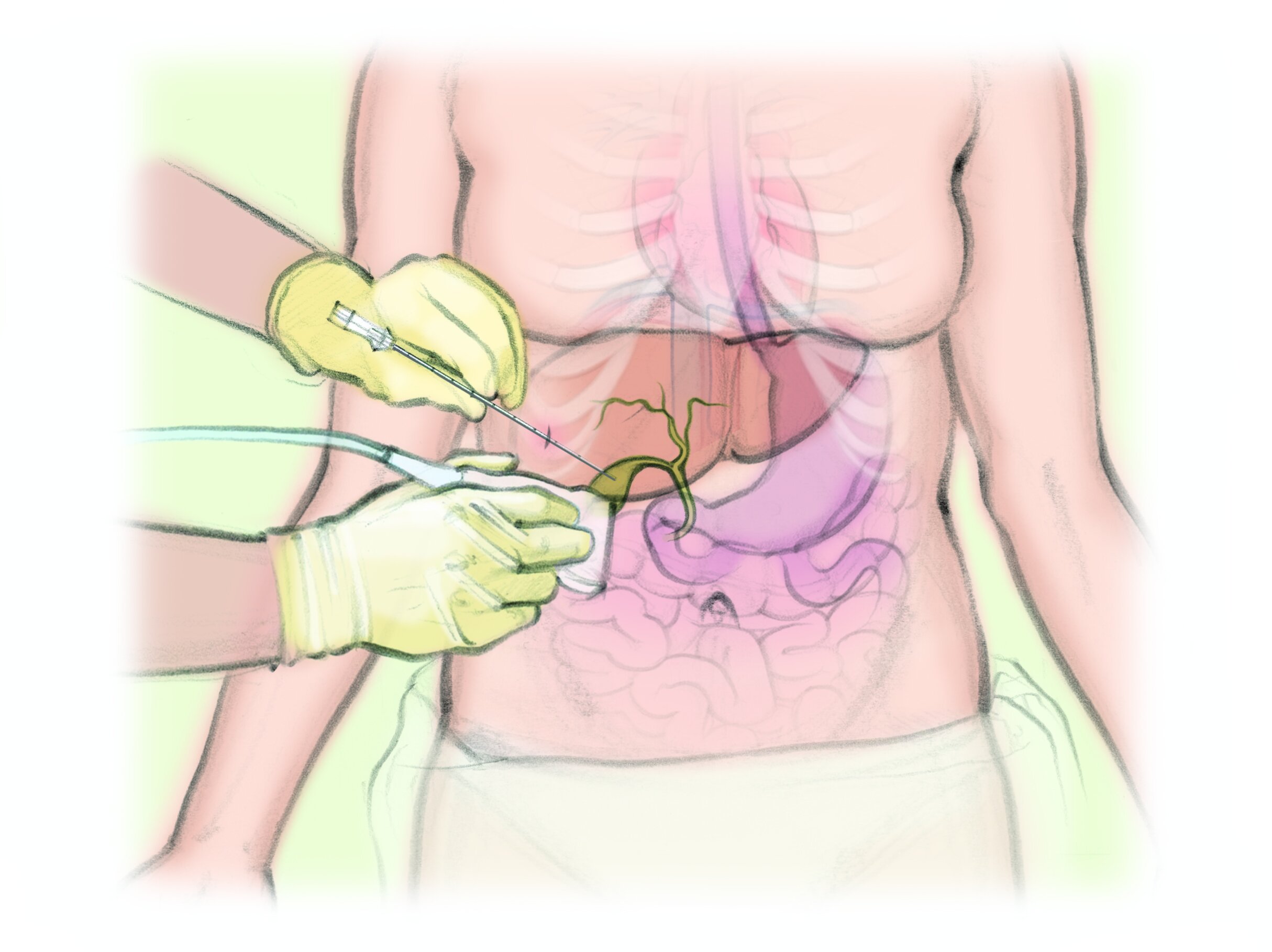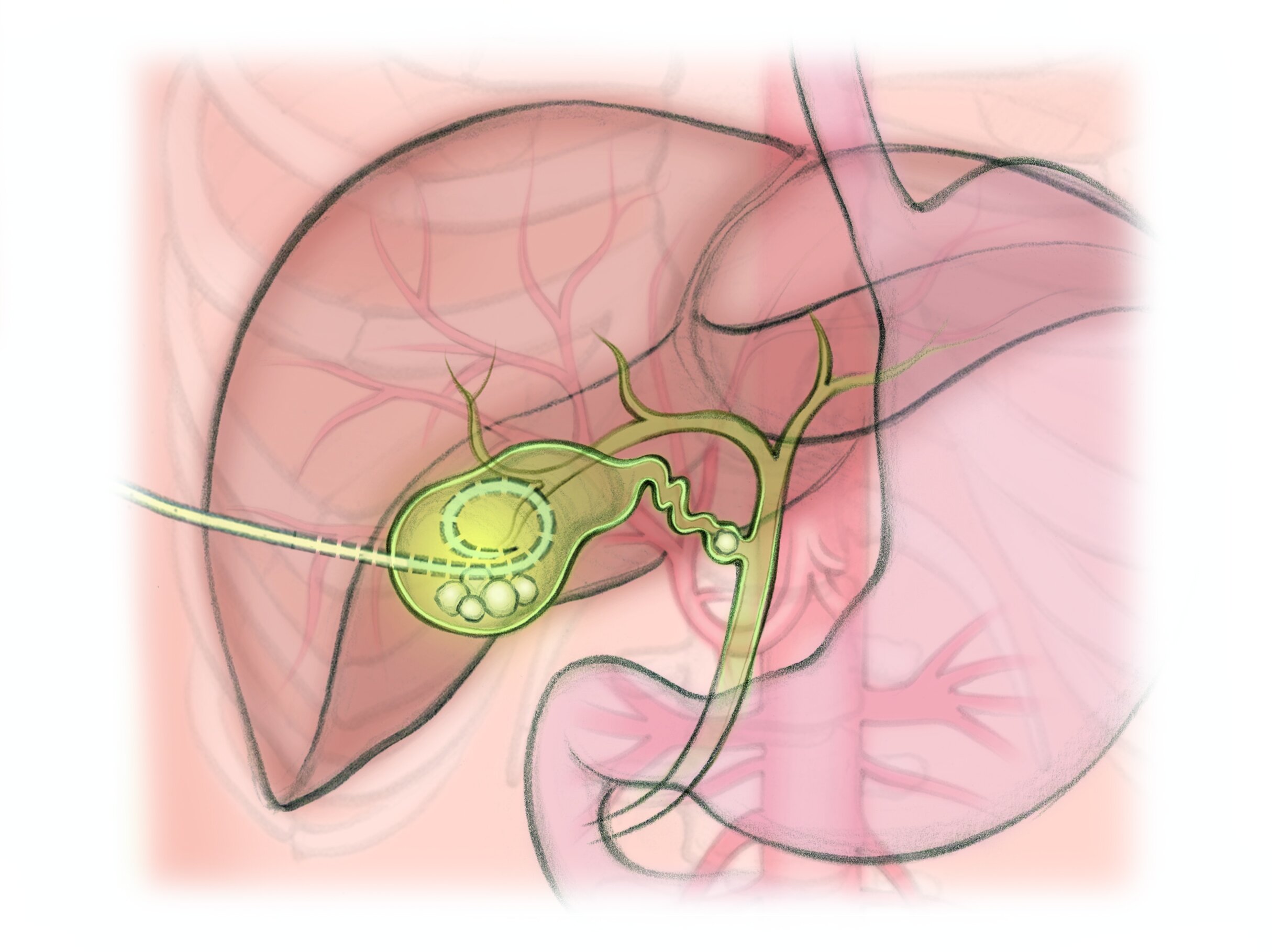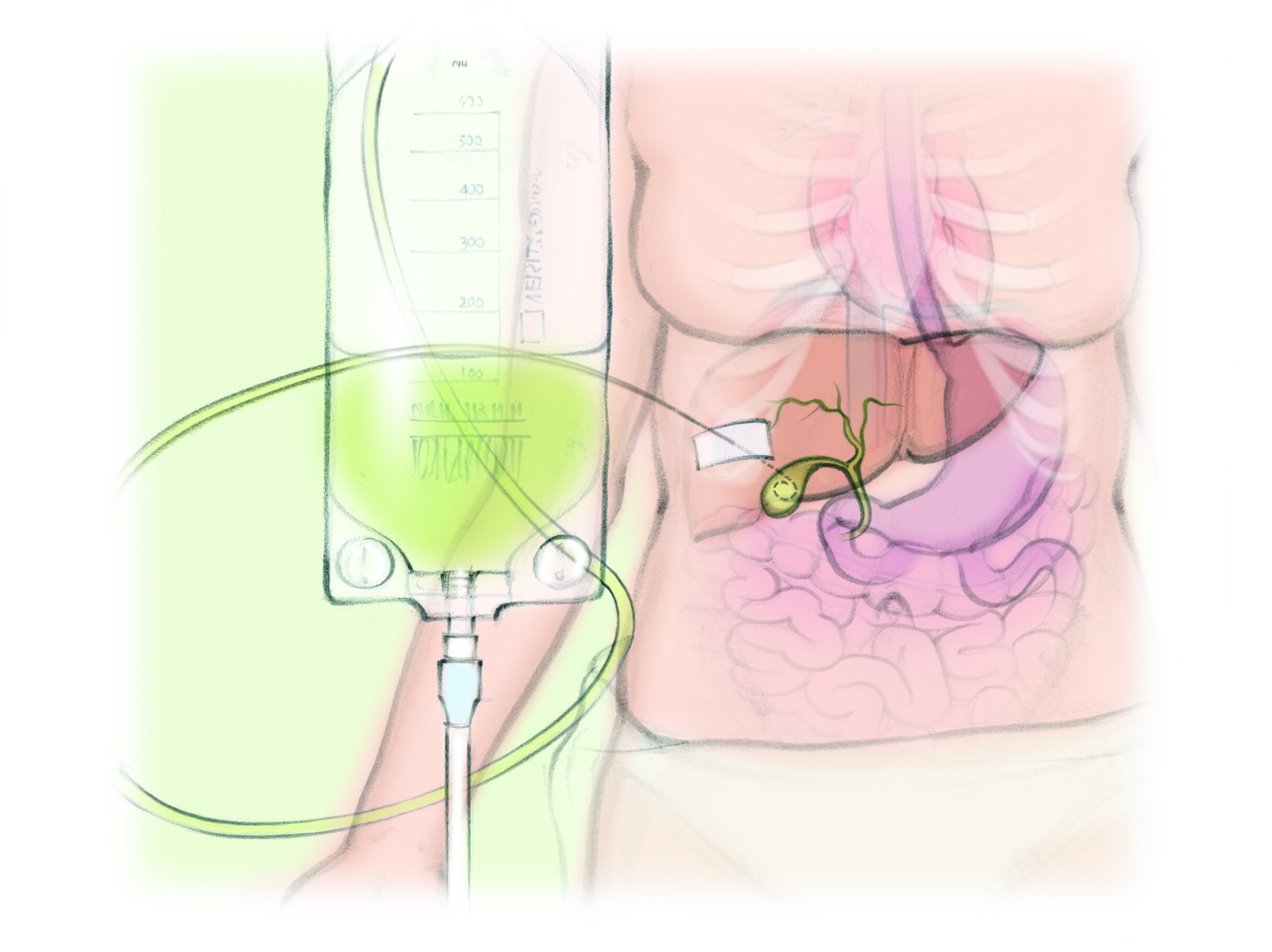Why do I need a gallbladder drain?
The gallbladder is a little bag under your liver that stores a yellow-green fluid called bile. When you eat, the gallbladder squirts bile into your intestines through a little tube. Bile helps your body digest fat. If that little tube gets blocked by a gallstone or sludge, the gallbladder can get infected. A gallbladder infection can be severe and even life-threatening.
A gallbladder drain is an alternative to surgery to remove the gallbladder. It is a thin plastic tube used to drain the pus into a bag. It is also called a “cholecystostomy tube”.
How is a gallbladder drain placed?
The clinician numbs the skin over the right upper belly. They make a small hole around an eighth of an inch. The clinician slides the drain through the hole and into the gallbladder. Ultrasound and/or moving X-rays help them guide the drain safely.
The gallbladder drain must stay in place for at least 6 weeks so the body can heal around it. This helps prevent bile from leaking out. Bile is very irritating to the skin and belly.
The gallbladder drain can then be removed when the blockage resolves or the gallbladder is removed in surgery. After the drain is removed, the hole closes in a few days without stitches. Rarely a patient will need a gallbladder drain for the long term. For these patients, the drain is swapped for a fresh one every few months.
Gallbladder Drain
1. After numbing the skin, the clinician makes a small pinhole into the gallbladder.
2. The clinician slides the drain through the skin and into the gall bladder.
3. The drain is connected to a bag to collect the bile.
What are the risks?
Gallbladder tubes are generally safe when placed by a specialist.
Complications are rare and occur in about 8 in 100 people. The most common complication is the drain pulling out of place. Up to 1 in 100 people may have worsening infection, bleeding, leakage of bile into the belly, damage to the intestines or temporary low blood pressure.
What are the alternatives?
Alternative 1 Not placing a gallbladder drain. Your gallbladder infection may clear up with germ-fighting medicines called antibiotics, but it may not. The infection could make you sicker and even lead to death.
Alternative 2 Surgery to remove the gallbladder. Surgery prevents future gallbladder infections. However, it is not safe for some people to have surgery. This is the main reason why gallbladder drains are placed.




